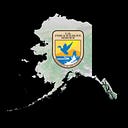National Wildlife Refuges
Wetlands of Alaska’s Kanuti Refuge
The lichens are sea-glass green in the auburn morning light after the rain. A raven circles overhead, calling “kaw-kaw-kaaaaaaw.” A shallow line of tannin-rich water slowly threads through layers of leaves and branches, small rocks, grouse droppings, brush and muck. Snow is melting. Soon this area will be too wet to cross easily on foot.
A vole suddenly runs with tiny feet that tik-tik-tik-tik, tik-tik-tik-tik across the ground and into a smooth tunnel in the snow, then stillness returns to the cool air. It is like that out here, life creates sounds and the stillness we call sacred. For a while, there is only the earth breathing and a feeling that permeates the whole of the ground, almost imperceptible, but familiar and welcoming.
A chickadee flutters down onto a branch singing vibrantly, da-de-de-de, da-de-de-de, then floats up and away swiftly, being at home with both the coming and going of things — something wings are accustomed to. A tiny moth is resting on a high point in the lichen. A faint breeze stirs the moth’s silver wings, edges thin as the space between bark and trunk, delicate as new green shoots moving upward from seed and hull. The accent is deliberate — up-down-side, up-down-side, up-down-side, then down-down-down past lichen onto soft brown grasses to a place of shelter where the smallest of creatures know to go.
The moth wasn’t here when caribou came through in thunderous leaps, hearts beating, muscles taut, steam exhaling from nostrils, hooves kicking up ground that was becoming earth, returning it to daylight in awkward clumps.
The little moth only knows the sound of its own delicate, tiny heart and circulatory system pumping a substance that performs many of the same functions as blood does in caribou. The waterways of these wetlands are also a circulatory system.
Life and birth and death folding into layers over seasons, centuries and millennia, forming wetlands from expired webs of life and dirt, antlers and hooves, tattered feathers and rock, gnarled roots and thorns, sinew and bones, a cacophony of life and boreal forest moving earthward in a ceaseless succession, vibrantly weaving new life, from life, into sustenance for life yet to come.
These wetlands, whether shrouded in winter, bustling with spring fever, humming in the heat of summer, or resting in the fading light of fall, are in their essence, life continuing — on and on and on. The dawn shifts skyward as day breaks bright and a raven circles overhead, calling, “kaw kaw kaaaaaaw.” The lichens are sea-glass green in the auburn morning light after the rain.
Written by Kristin Reakoff, Interpretive Park Ranger for the U.S. Fish and Wildlife Service. Learn more about Kanuti National Wildlife Refuge.
In Alaska we are shared stewards of world renowned natural resources and our nation’s last true wild places. Our hope is that each generation has the opportunity to live with, live from, discover and enjoy the wildness of this awe-inspiring land and the people who love and depend on it.
